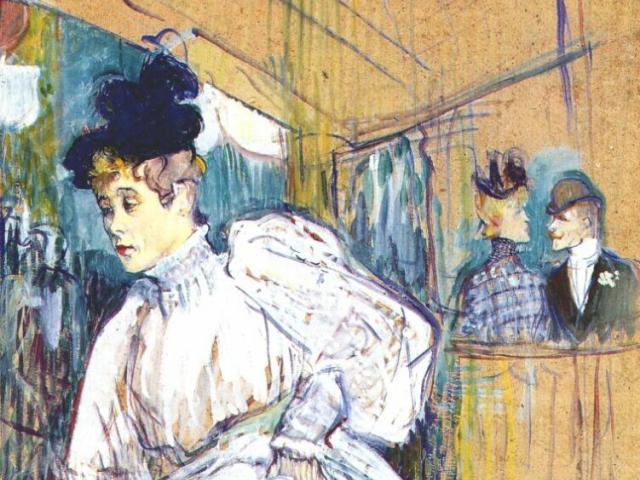Jane Avril dancing

In this captivating lithograph created with diluted oil in 1892, viewers are transported to the vibrant world of the Belle Époque in Paris, where the iconic dancer Jane Avril takes center stage. Renowned for her mesmerizing performances at the Moulin Rouge, Jane Avril was not only a muse to the talented artist Henri de Toulouse-Lautrec, but also a symbol of the exuberant spirit of the era. Toulouse-Lautrec's portrayal of Jane Avril captures her grace, energy, and passion for dance, showcasing her as a true embodiment of the art form.
Through his art, Toulouse-Lautrec offers a glimpse into the bustling nightlife of Paris, particularly the lively cabarets and dance halls that were popular at the time. The lithograph of Jane Avril dancing not only celebrates her talent and beauty but also sheds light on the challenges faced by performers in the entertainment industry. Toulouse-Lautrec's keen eye for detail and his ability to capture the essence of his subjects make this piece a timeless representation of the Parisian scene during the late 19th century.
As a guide for tourists exploring Paris, this lithograph serves as a window into the world of Toulouse-Lautrec and his fascination with the city's bohemian culture. By depicting Jane Avril in her element, the artist invites viewers to experience the excitement and glamour of the Moulin Rouge, where art, music, and dance converged to create a unique and unforgettable atmosphere. Toulouse-Lautrec's deep connection to his subjects, including Jane Avril, is evident in the way he portrays them with sensitivity and insight, capturing not just their physical appearance but also their inner essence.
In addition to being a stunning work of art, this lithograph of Jane Avril dancing is a testament to the enduring legacy of Toulouse-Lautrec and his contribution to the world of modern art. His innovative techniques, bold use of color, and expressive style have made him a revered figure in art history, with his works continuing to inspire and captivate audiences around the world. For tourists seeking to immerse themselves in the rich cultural heritage of Paris, a visit to museums showcasing Toulouse-Lautrec's masterpieces, such as this lithograph of Jane Avril, is a must-do experience that promises to enlighten, entertain, and inspire.
© ChatGPT 3.5
Who was Jane Avril? Her life began as the daughter of a peculiar marriage between an Italian aristocrat and a French courtesan. Jane lived a difficult life because she grew up being abused for much of her childhood. She was recognized for her energetic and frenetic dance style, which is why she was known as “La Mélinite”. Among the many rumors that existed about her is the fact that she chose her underwear and dress according to each of her dances. Toulouse-Lautrec and she were very good friends and in fact the painter always tried to explore various facets of the dancer whether on canvas or posters.
One of the characters seen in the background of the painting is Warner, artistic agent of the Moulin Rouge, who was later the model for his lithograph An Englishman at the Moulin Rouge.
Toulouse-Lautrec is the precursor of using art in a much more commercial aspect, in this case in advertising. The problem with this aspect is that many times these posters had to be made quickly, often making them look unfinished, but these were so well made that they were literally torn off the walls.